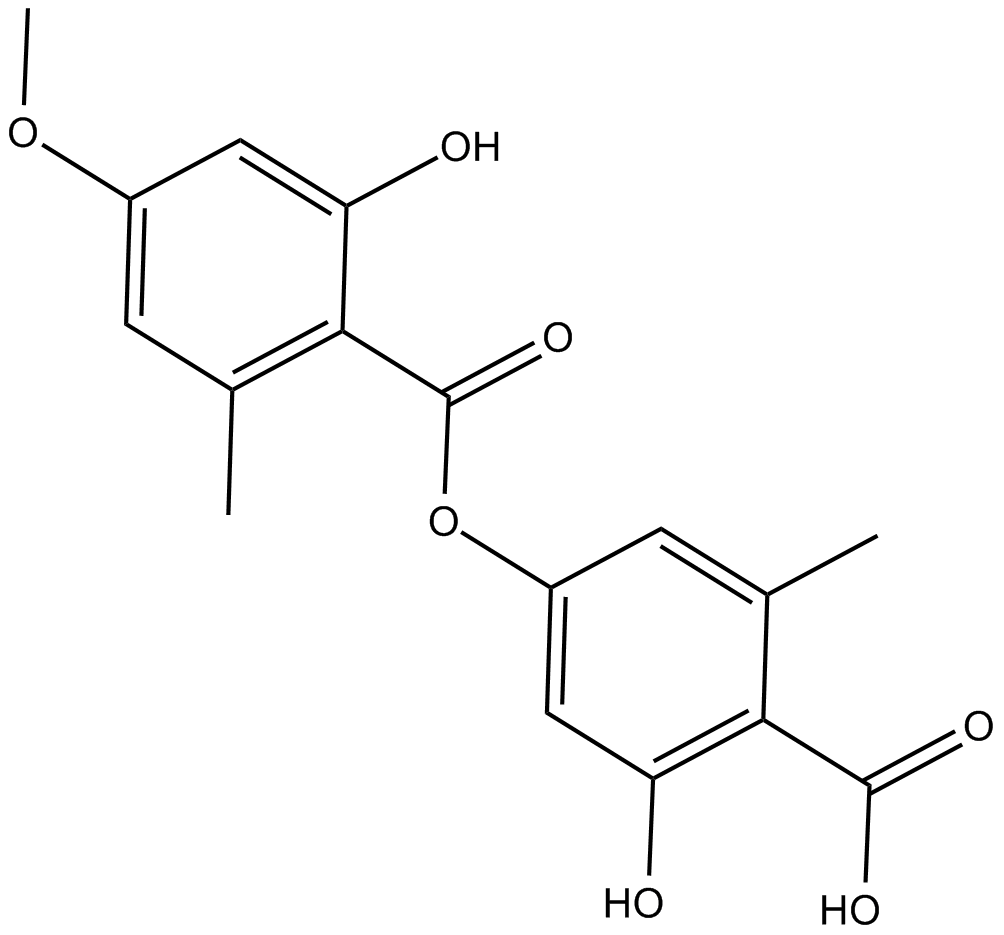Evernic Acid (Synonyms: NSC 81164) |
| Catalog No.GC13238 |
inhibitor of two key plasmodial FAS-II enzymes PfFabZ and PfFabI
Products are for research use only. Not for human use. We do not sell to patients.

Cas No.: 537-09-7
Sample solution is provided at 25 µL, 10mM.
Evernic Acid is an inhibitor of two key plasmodial FAS-II enzymes PfFabZ and PfFabI
The Type II fatty acid synthase (FAS) system catalysed fatty acid biosynthesis in most bacteria. Fatty acids are aliphatic acids important for energy production and storage, cellular structure and as intermediates in the biosynthesis of hormones and other biologically important molecules. The FAS-II exists in archaea and bacteria, which has been characterized by the use of discrete, monofunctional enzymes for fatty acid synthesis. Inhibitors of this pathway (FASII) are being investigated as possible antibiotics. The bacterial FASII pathway is a promising target for the development of novel antimicrobial drugs [2]. Disruption of genes encoding mitochondrial FAS enzymes in yeast results in a respiratory-deficient phenotype and small rudimentary mitochondria [3].
Evernic acid was a secondary metabolite produced by some species of lichen. Evernic acid bound to allosteric sites on the protein surface of FAS-II enzymes and produced antibacterial and antiplasmodial effects. Evernic acid inhibited PfFabZ and PfFabI with the IC50 values of 10.7 and 36.1 μM, respectively. Evernic acid showed low efficacy against the malaria parasite P. berghei with an IC50 of 77.3 μM [1].
References:
[1] Lauinger I L, Vivas L, Perozzo R, et al. Potential of lichen secondary metabolites against Plasmodium liver stage parasites with FAS-II as the potential target[J]. Journal of natural products, 2013, 76(6): 1064-1070.
[2] Marrakchi H, Zhang Y M, Rock C O. Mechanistic diversity and regulation of Type II fatty acid synthesis[J]. 2002.
[3] Hiltunen J K, Schonauer M S, Autio K J, et al. Mitochondrial fatty acid synthesis type II: more than just fatty acids[J]. Journal of Biological Chemistry, 2009, 284(14): 9011-9015.
Average Rating: 5 (Based on Reviews and 33 reference(s) in Google Scholar.)
GLPBIO products are for RESEARCH USE ONLY. Please make sure your review or question is research based.
Required fields are marked with *




















